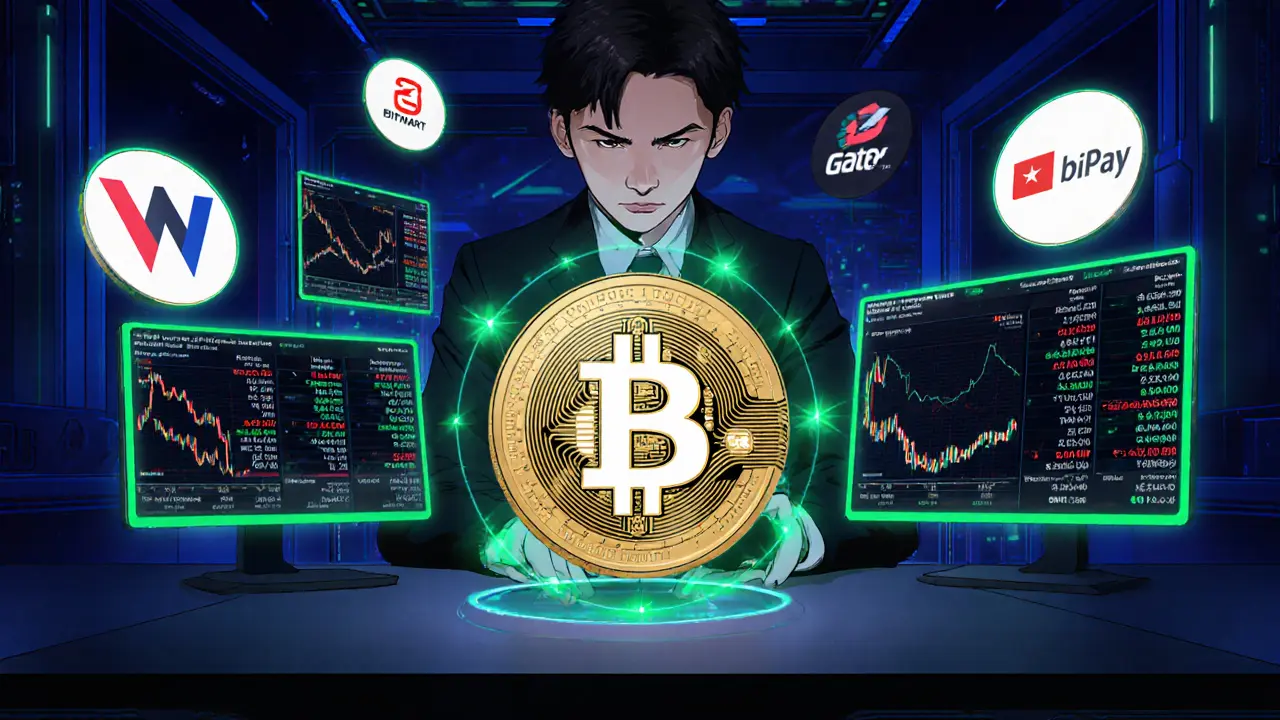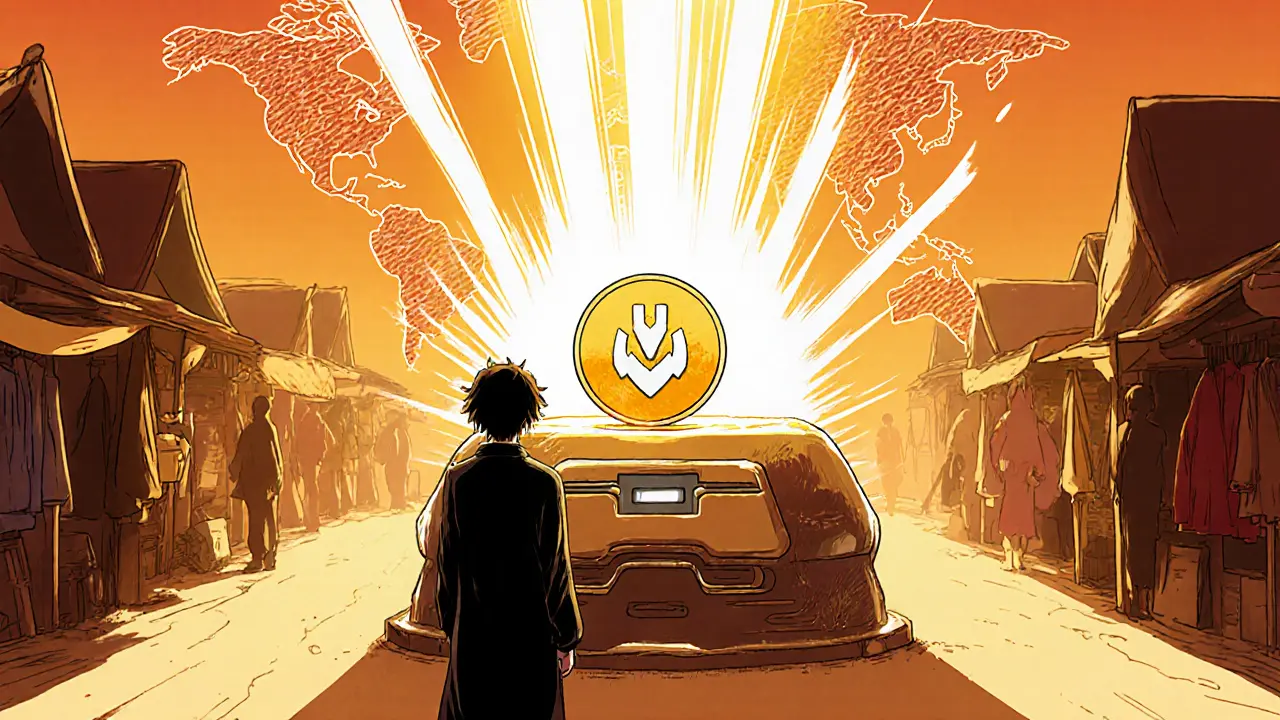WPAY Crypto Coin Explained: What Is WPAY and How It Works

WPAY Value Calculator
Calculate the value of your WPAY holdings and see how much you could save with Wirex fee discounts and staking returns.
$0.00
Fee Savings
Using WPAY for Wirex card transactions could save you up to 20% on fees.
Staking Returns
Estimated 8.5% APY for staked WPAY (as of Q2 2025 roadmap).
When you hear the buzz around new crypto tokens, WPAY is the one Wirex’s payment platform introduced to blend fiat‑friendly services with blockchain speed. Launched in September 2024, WPAY lives on the Polygon network as an ERC‑20 token, aiming to reward users, cut fees, and eventually power cross‑border payments within the Wirex ecosystem. If you’re wondering whether WPAY is just another meme coin or a usable payment token, this guide breaks down its tech, tokenomics, market performance, and real‑world use cases so you can decide if it belongs in your wallet.
Key Takeaways
- WPAY is an ERC‑20 utility token on Polygon, created by Wirex to enhance its payment platform.
- Only about 5.34% of the 10 billion total supply is circulating, which limits immediate liquidity.
- Current price hovers around $0.18, with most trading on BitMart and Gate.io.
- Utility is confined to Wirex services - fee discounts, loyalty rewards, and upcoming staking.
- Long‑term success hinges on Wirex delivering its integration roadmap and expanding exchange listings.
What Is WPAY? - The Basics
WPAY (short for Wirex Pay) is a native utility token designed exclusively for the Wirex platform. Its smart contract lives at 0x7ABE9Edf5C544A04dA83e9110CF46DBC4759170c on Polygon and follows the standard 18‑decimal ERC‑20 format. Wirex describes WPAY as the “fuel” that powers fee discounts, reward programs, and future staking features, essentially turning every transaction on the platform into a potential earnings opportunity.
Because it runs on Polygon, transactions are cheap (often under $0.001) and fast, which aligns with Wirex’s goal of offering near‑instant fiat‑on‑ramp services without the high gas fees typical of Ethereum mainnet.
Tokenomics at a Glance
Understanding a token’s supply and distribution tells you a lot about future price pressure. WPAY’s tokenomics look like this:
| Metric | Value |
|---|---|
| Total Supply | 10.00 billion WPAY |
| Circulating Supply | 534 million (5.34%) |
| Public Sale Allocation | 1.6 million (0.02%) |
| Node Sale & Ecosystem | ≈ 30% (locked for up to 3 years) |
| Strategic Reserve | ≈ 60% (held by Wirex) |
The massive lock‑up means most tokens are in the hands of Wirex, reducing immediate sell pressure but also raising concerns about future dilution when unlocks occur.
Where Can You Buy WPAY?
WPAY isn’t on every major exchange yet. The primary venues as of October 2025 are:
- BitMart - $0.176461, 42.65% of 24‑hr volume.
- Gate.io - $0.176343, 56.61% of 24‑hr volume.
- SushiSwap v3 (Polygon) - low liquidity, mainly for swapping.
- QuickSwap v2 (Polygon) - similar liquidity profile.
Bitget runs regular “Learn2Earn” promos that hand out 50‑200 WPAY for completing tutorials, making it a popular entry point for newcomers.

How WPAY Works Inside Wirex
Wirex integrates WPAY in three phases:
- Fee Discounts (Q4 2024) - Users can pay with WPAY to cut transaction fees on the Wirex card.
- Cross‑border Payments (Q1 2025) - WPAY acts as an intermediary, reducing conversion costs.
- Staking (Q2 2025) - Stakers earn an estimated 8.5% APY, encouraging holding.
Beyond these phases, Wirex plans to let merchants accept WPAY directly, but that roadmap is still in beta.
Comparing WPAY to Other Payment Tokens
Payment‑focused tokens like XRP, Stellar (XLM) and Tron (TRX) dominate the space. Here’s a quick side‑by‑side comparison:
| Token | Market Cap (USD) | Circulating Supply | Main Use‑Case |
|---|---|---|---|
| WPAY | $5.7 M | 534 M | Wirex fee discounts & upcoming staking |
| XRP | $28.7 B | 45 B | Cross‑border remittances |
| XLM | $3.2 B | 25 B | Low‑cost transfers, DeFi |
| TRX | $1.1 B | 71 B | Entertainment & dApps |
WPAY’s market cap is tiny compared to the giants, reflecting its early stage and limited exchange exposure.
Risks & Criticisms
Every token carries risk, and WPAY is no exception. The most cited concerns are:
- Liquidity constraints - With only four major exchanges, large trades cause noticeable slippage.
- Lock‑up concentration - Over 94% of tokens are held by Wirex, posing a potential flood when unlocks happen.
- Utility limited to Wirex - Outside the Wirex app, there’s little reason to hold WPAY.
- Regulatory uncertainty - The SEC’s utility‑token guidance could reclassify WPAY if it gains broader use.
- Adoption risk - Success depends heavily on Wirex’s ability to roll out promised features on time.
Analysts at CryptoRisk Analytics give WPAY a risk score of 7.2/10, reflecting moderate‑high concern.

Community & Support Landscape
WPAY’s community is still forming. The main hubs are:
- Wirex Telegram channel - ~4,200 members.
- Bitget WPAY forum - 87 active users.
- Reddit mentions - about a dozen posts in the last month, mostly promotional.
Support tickets specific to WPAY average a 48‑hour resolution time, with a satisfaction rating of 3.2/5 on Wirex’s internal dashboard.
Future Outlook
If Wirex can deliver fee‑discount integration by the end of 2024 and launch staking by mid‑2025, WPAY could see higher demand from its 7 million‑plus user base. Some price models predict volatile swings, ranging from $0.10 in 2026 to potential peaks near $1.70 by 2040, but these are speculative and depend on broader crypto market sentiment.
In short, WPAY currently serves a niche purpose inside Wirex. Its upside is tied to platform upgrades and broader exchange listings (Binance, Coinbase are rumored for 2025 but not confirmed). Investors should weigh the limited liquidity and high concentration against the potential of earning fee discounts and staking rewards.
Frequently Asked Questions
What blockchain does WPAY run on?
WPAY is an ERC‑20 token on the Polygon (formerly Matic) network, which offers low‑fee and fast confirmations.
How can I store WPAY?
Supported wallets include MetaMask and Trust Wallet when configured for the Polygon network. You must add the contract address 0x7ABE9Edf5C544A04dA83e9110CF46DBC4759170c manually.
Where is WPAY traded?
The main exchanges are BitMart and Gate.io. Decentralized swaps like SushiSwap and QuickSwap also list WPAY on Polygon, though liquidity is thin.
What can I use WPAY for right now?
Currently, WPAY provides fee discounts on Wirex card transactions and can be earned via Bitget’s Learn2Earn promotions. Staking and broader merchant acceptance are pending roadmap phases.
Is WPAY a security?
Wirex positions WPAY as a utility token, but regulatory bodies like the SEC have not issued a definitive ruling. The token’s limited external utility helps its argument, but risk remains.
Schuyler Whetstone
April 8, 2025 AT 05:23WPAY is just another cach grab from Wirex, not a real crypto projec.
Jason Zila
April 14, 2025 AT 22:11Look, WPAY runs on Polygon which means transaction fees are practically nothing. The token’s utility is confined to Wirex’s fee discounts and upcoming staking, so its value is tied to that ecosystem. If Wirex rolls out the roadmap on schedule, you could see some adoption, otherwise it’s just a niche token. The circulating supply is tiny compared to the total, which could cause price spikes when demand rises.
Cecilia Cecilia
April 21, 2025 AT 14:59WPAY offers fee reductions within the Wirex platform and may provide staking rewards in the near future it remains a utility token with limited external use.
lida norman
April 28, 2025 AT 07:47Honestly, seeing a token that promises lower fees feels like a breath of fresh air 😮💨. The community is still tiny but growing, and the drama around its launch keeps us all on edge!
Miguel Terán
May 5, 2025 AT 00:35WPAY entered the market at a time when many platforms were scrambling for a token that could bridge fiat and crypto. Its placement on Polygon gives it a technical edge in terms of speed and cost. The tokenomics are heavily weighted toward the Wirex reserve which holds the majority of the supply. This concentration can be a double‑edged sword because it protects the market from immediate dumping but also raises the specter of future dilution. The circulating supply of just over five percent means liquidity is thin on most exchanges. Traders who attempt large moves often encounter slippage that can erode profits. The current price hovering around a few cents reflects both the nascent stage and the limited utility outside the Wirex ecosystem. Fee discounts are attractive for existing users but they do not create a compelling reason for new investors to accumulate large positions. The roadmap promises staking with an estimated APY that could entice holders to lock up their tokens. However, any delay in delivering that feature could dampen enthusiasm quickly. Comparisons to established payment tokens like XRP and Stellar highlight WPAY’s modest market cap. Yet the brand backing from Wirex could lend credibility if the company follows through on its promises. Regulatory uncertainty remains a cloud over the token as authorities continue to scrutinize utility classifications. Community engagement is modest with a few thousand members in Telegram and limited Reddit chatter. Such a small community may struggle to generate the network effects needed for broader adoption. In summary the token sits at a crossroads between potential utility within a niche platform and the risk of becoming an isolated asset with limited demand.
Shivani Chauhan
May 11, 2025 AT 17:23Thank you for the thorough breakdown. Your points about liquidity and regulatory risk are well‑taken. I would add that monitoring the upcoming staking launch could provide clearer signals about user commitment.
Deborah de Beurs
May 18, 2025 AT 10:11Honestly this token is a textbook example of hype over substance. Wirex is busy patting itself on the back while hiding a massive token lockup that could flood the market tomorrow. The so‑called “utility” is nothing more than a discount coupon that you can’t use outside their app. If they don’t deliver staking on time the whole thing will implode.
Sara Stewart
May 25, 2025 AT 02:59Spot on, Deborah. The token’s utility tokenomics are basically a dead‑end funnel. Without real‑world merchant adoption we’re just looking at a closed loop reward system-nothing to drive sustainable volume.
Laura Hoch
May 31, 2025 AT 19:47When we examine WPAY through the lens of value theory we see a token caught between being a mere instrument of corporate convenience and a potential catalyst for decentralized finance within a centralized platform. Its existence forces us to question whether utility can ever be divorced from the gatekeepers that create it, and whether investors are complicit in that paradox. The promise of lower fees is seductive, yet it masks a deeper dependency on Wirex’s strategic decisions. In this tug‑of‑war the token becomes a mirror reflecting our own willingness to trade autonomy for marginal cost savings.
David Moss
June 7, 2025 AT 12:35Indeed, Laura, the narrative surrounding WPAY is not just a simple market story, it is a tangled web of hidden agendas, regulatory chess moves, and corporate power plays, and one must wonder whether the token is being positioned as a Trojan horse, a subtle conduit for data collection, a testbed for future fiat‑crypto integration, all while the public is distracted by the promise of cheap transactions.